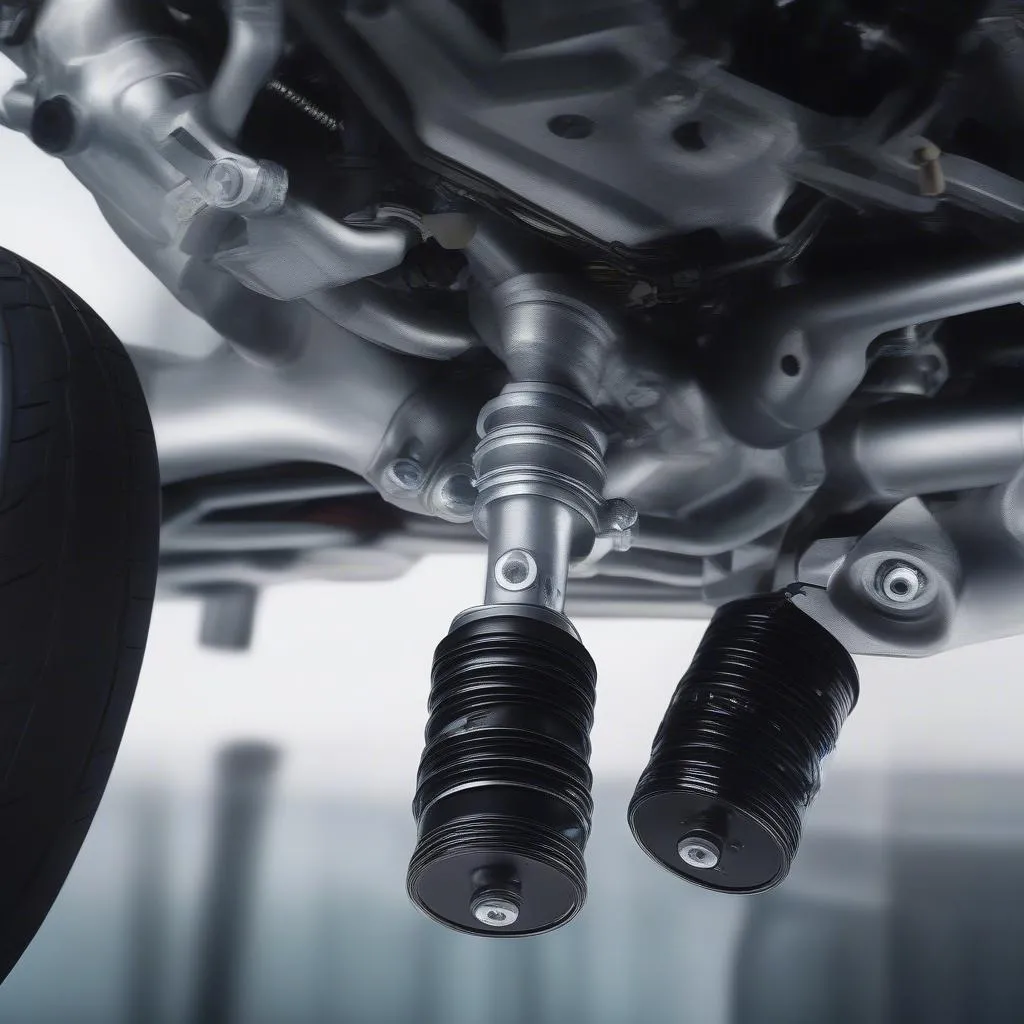A glowing suspension warning light on your Mercedes Benz dashboard can be a real buzzkill. This light usually indicates an issue with your car’s sophisticated suspension system, which could range from a minor sensor glitch to a significant component failure.
This guide delves into the common causes of the Mercedes Benz suspension warning light and provides a step-by-step approach to diagnose and potentially fix the problem.
Understanding the Mercedes Benz Suspension Warning Light
Your Mercedes Benz suspension system is responsible for a smooth and controlled ride. When the warning light illuminates, it’s the car’s way of telling you something is amiss.
Common Causes of Suspension Warning Light
Several culprits could be triggering that amber glow on your dashboard:
- Malfunctioning Suspension Level Sensors: These sensors monitor the ride height of your vehicle. A faulty sensor can send incorrect data, prompting the warning light.
- Worn-out Air Suspension Struts: Over time, air suspension struts can wear down, leak, or become damaged, leading to an uneven ride height and triggering the warning light.
- Air Compressor Issues: The air compressor is the heart of your air suspension system, pumping air into the struts. If it malfunctions, the system won’t function correctly.
- Electrical Problems: Wiring issues, corroded connections, or a faulty suspension control module can disrupt the system’s electrical signals, causing the warning light to activate.
Diagnosing the Issue
Before rushing into repairs, it’s crucial to pinpoint the root cause:
- Visual Inspection: Check for any visible damage to the air suspension components, such as leaking struts or damaged wiring.
- OBD-II Scanner: Connect an OBD-II scanner to your car’s diagnostic port to read the error codes stored in the suspension control module. These codes provide valuable insights into the specific problem area.
- Professional Diagnosis: For complex issues, consider consulting a qualified Mercedes Benz mechanic or a specialized auto electrician.
Mercedes Benz Suspension Warning Light Fix Module
While the term “Mercedes Benz Suspension Warning Light Fix Module” might sound like a one-size-fits-all solution, it’s essential to understand that it typically refers to aftermarket devices marketed to suppress the warning light.
Caution: Using such devices is generally not recommended. Simply hiding the warning light without addressing the underlying issue can lead to further damage and safety risks.
Addressing the Root Cause
Depending on the diagnosed issue, here’s a general approach to fixing the problem:
- Sensor Replacement: Faulty suspension level sensors usually require replacement with new ones.
- Strut Replacement: Worn-out or leaking air suspension struts need to be replaced. It’s recommended to replace them in pairs (both front or both rear) to maintain balanced suspension performance.
- Air Compressor Repair or Replacement: Depending on the severity of the issue, the air compressor might require repair or replacement.
- Electrical System Check: Inspect wiring harnesses, connections, and the suspension control module for any electrical faults. Repair or replace components as needed.
 Mercedes Suspension System
Mercedes Suspension System
Frequently Asked Questions
Can I drive my Mercedes Benz with the suspension warning light on?
It’s not advisable to ignore the suspension warning light. While you might still be able to drive the car, it could indicate a safety concern.
How much does it cost to fix a Mercedes suspension?
The repair costs can vary widely depending on the specific issue, the model of your Mercedes, and labor rates in your area.
Where can I find reliable Mercedes Benz repair services?
For specialized Mercedes Benz repairs, consider reaching out to authorized dealerships, reputable independent mechanics specializing in European cars, or check for certified Mercedes Benz technicians in your area.
You can also check out CARDIAGTECH for possible solutions and resources related to your car troubles.
 Mercedes Benz Mechanic at Work
Mercedes Benz Mechanic at Work
Conclusion
The Mercedes Benz suspension warning light is a crucial indicator of potential issues with your car’s ride control system. Addressing the root cause is paramount for a smooth, safe, and enjoyable driving experience. Remember, while quick fixes might seem tempting, investing in proper diagnosis and repairs ensures the longevity of your Mercedes and, more importantly, your safety on the road.

